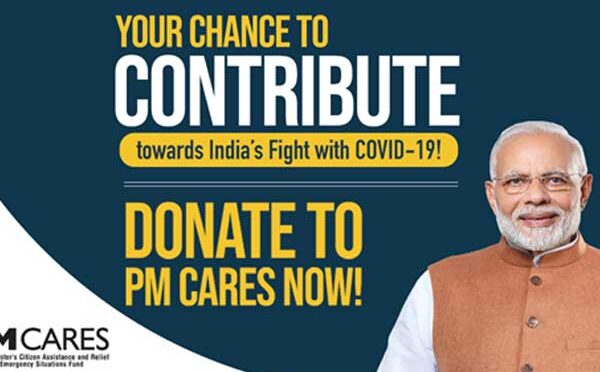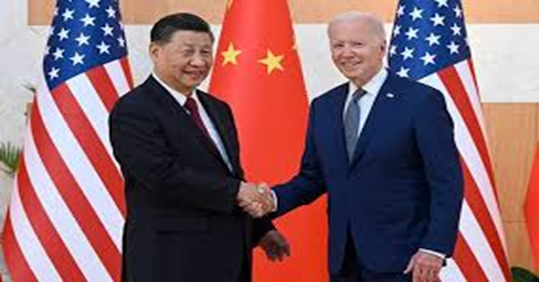Deconstructing the PM-CARES Fund
Posted on : February 25, 2022Author : Pratyusha Raychaudhuri

Introduction to the fund
Collaborations of the civil society and the government are not an uncommon phenomenon in the face of an emergency or natural disaster and the COVID19 pandemic has proved to be no exception to this. It is considered to be an important aspect of relief effort especially for developing countries and even more so in a population like that of India’s, where government agencies may not be able to reach all rungs of the society alone. The ‘Prime Minister’s Citizen Assistance and Relief in Emergency Situations Fund’ (PM CARES) Fund was launched on March 27th, 2020 by Prime minister Narendra Modi, as a ‘dedicated’ national fund towards dealing with the distress situations and other difficulties posed by the pandemic. It recognizes itself as a public charitable trust, chaired by the Prime Minister of India (ex-officio), with the Minister of Defence, Minister of Home Affairs and Minister of Finance as its trustees (ex-officio). As Chairperson, the Prime Minister shall reserve the right to nominate 3 trustees from eminent arenas of research who shall take up the role in pro bono capacity. Additionally, the PM-CARES is exempt from the legal restrictions under the Foreign Contribution (Regulation) Act 2010 (FCRA). This relaxation is granted without meeting the prerequisites of being a body established/owned by the government whose accounts are to be audited by the Comptroller and Auditor General of India (CAG). This measure was taken to encourage contributions from individuals and organizations alike from foreign countries and the Fund has a separate account for such donations.
PM-CARES vs PMNRF
With the introduction of this fund in 2020, opposition roared in protest on various grounds, the foremost being the existence of the Prime Minister’s National Relief Fund (PMNRF). The PMNRF was established in 1948 with ex-Prime Minister Nehru’s initiative, used to assist displaced citizens during the partition. The resources of the PMNRF have since then been utilized to provide relief to families of those killed in natural disasters as well as accidents and riots. This fund was also put to use to partially fund medical expenses. Criticism from the likes of Historian Ramchandra Guha and MP Shashi Tharoor has pointed at the unnecessary creation of a separate “self aggrandising” fund with “catchy acronyms”, one that takes away from the gravity of the situation and can be seen as misleading the public. There have also been demands for transferring the funds from the much-debated PM-CARES to the PMNRF filed in the Supreme Court for its transparency of fund allocation and the question of legality which were dismissed.
While the PMNRF and PM-CARES both enjoy 100% tax exemption under section 80(G) of the Income Tax, there is much that sets these two funds apart. Donations to the PMNRF must be made from voluntary institutions and individuals, and cannot come out of Public Sector Undertakings which sets it apart from the PM-CARES fund, throwing its arena for possible contribution wide open. This aids fast collection in the face of the pandemic from citizens irrespective of age, gender, profession etc. These tax exempted donations can be counted as contribution under the Corporate Social Responsibility (CSR) which is not something the PMNRF caters to. The PM-CARES has also taken a stride at being more democratic in its disbursement of funds as three ministers namely Home Minister Amit Shah, Defence Minister Rajnath Singh, and Finance Minister Nirmala Sitharaman have been delegated similar powers apart from the Prime minister, unlike the PMNRF. This eases tensions stemming from consolidated power in one hand acting as Judge Jury and Executioner of a fund of such stature.
Does the PM-CARES care?
The official website of PM-CARES trust accounts for 3 broad allocations that amount to Rs. 3100 crores. The total amount received by the trust has not been disclosed despite several RTIs being filed. The last known figure accounts to Rs. 9677.9 crores as of May 20, 2020 from the press releases on the Press Information Bureau Website summed by the Indiaspend.com website, while the real figures may be higher. Due to its lack of response to the RTIs, only 32% of the total collection has been put to use, which in itself is an unlikely number. Transparency and proper utilization of the PM-CARES fund thus remains a matter of concern especially owing to the endless difficulties that the pandemic has posed upon citizens such as loss of jobs, dangers to the lives of migrant workers, digital divide to name a few. Developing countries like India have the need for government-citizen collaboration at all times as response to situations like the COVID19 pandemic and with the enormous financial power of the PM-CARES it is imperative for swift and proper action on their part, specifically with the Prime Minister and 3 members of the parliament at its helm.
The 3100 crores allotted from the fund have been distributed among the following:
- 2000 Crore is to be utilised for the supply of 50,000 ‘Made-in India’ ventilators to Government Hospitals
- 1000 Crore has been allotted to State governments and Union Territories for the plight of migrant labourers
- 100 Crore is to be disbursed for development of vaccines, announced on 13th May 2020, under the supervision of Principal Scientific Advisor
As the PM-CARES fund is to hit the 2 years landmark, there lacks clarity over the allocation of the abovementioned deposits since the announcement. To throw light on this Indian Navy veteran Commodore Lokesh Batra had filed RTIs with the Ministry of Health and Family Welfare.
The Ministry of health has reported the release of Rs. 1532 crores of the 2000 as of July 2021 as per the Hindu report. The estimated costs of the 50000 ventilators have also been marked at Rs. 2147 crores which exceeds the provision of the PM-CARES, the details of which have been sent to the Prime Minister’s Office (PMO) and the disbursement of payment awaiting clearance. Besides this, many problems have been reported with the batch of ventilators dispersed under this initiative. Chandigarh government hospitals have submitted a quality assessment of faulty ventilators submitted to the Central Government for action. Srinagar’s Shri Maharaja Hari Singh (SMHS) Hospital has also complained of the 165 ventilators it received to be defective.
An RTI was filed to locate the benefactor of the Rs. 100 crore for vaccine development on 16th July 2021 but was faced with several dead ends. Astoundingly, the Indian Council of Medical Research (ICMR) and the Health Ministry’s COVID-19 Vaccine Administration Cell (CVAC) have stated that they haven’t received the allocated funds. Meanwhile, the PMO has refused to answer the RTI owing to its legality question and a conclusive answer is yet to be reached.
Issues of Legality surrounding the Fund
The official website of the PM CARES Fund declares it as a Public Charitable Trust. The trust deed of PM-CARES Fund was registered under the Registration Act 1908 on 27th March, 2020. The Delhi High Court has been told that the PM-CARES Fund is not a Government of India fund and the amount collected by it does not go to the Consolidated Fund of India.
Controversy arises due to the conflicting responses of the Central government, which are open to interpretation, to the various RTI pleas made at Court. In a reply to an RTI application on 24th December, the office of the Commissioner of Income Tax (Exemption) stated that PM-CARES fund was “owned by, controlled by and established by the Government of India” and is yet not subjected to the RTI as it receives private as well as foreign financing. This however is in direct contradiction with Section 2(h) subsection D part I of the RTI, which would make the PM-CARES fall under the gambit of “public authority.” This statement is also contradictory to the trust deed of the PM-CARES which states that the PM-CARES trust was not owned or controlled by the government. The PM-CARES fund also received a heads up for qualifying as a Corporate Social Responsibility (CSR) on 28th March 2020 from the Ministry of Corporate Affairs that necessitates it being a government entity. This caused further confusion and was rectified on May 26th 2020 when the Fund was added to the Companies Act.
The usage of the National Flag and Emblem as well as the association of the Prime Minister’s name with the fund has been brought to the forefront of debate. A Public Interest Litigation (PIL) was filed by Congress leader Vikrant Chavan seeking the removal of such entities from the official website in compliance with the Emblems and Names (Prevention of Improper Use) Act, 1950 and the Flag Code of India, 2002. The Prime Minister’s Office in its affidavit to the Bombay High Court challenging the charges stated that “PM-CARES fund and Prime Minister’s National Relief Fund (PMNRF) are both chaired by the Prime Minister. As the name, photograph of the Prime Minister and National Emblem are being used for the PMNRF, they are also being used for the PM-CARES Fund. Flag Code of India, 2002, which brings together all laws, conventions, practices and instructions regarding display of National Flag provided that there cannot restriction on display of National Flag by members of general public, private organizations, educational institutions etc, except to extend provided in the Emblems and Names Act, 1950” on 18th January 2022.
It’s unforeseen repercussions
To promote the inflow of donations, the Department of Revenue under the Ministry of Finance issued a circular dated April 17, 2020. It read “It has been decided to appeal all officers and staff to contribute their 1 day’s salary every month till March 2021 to the Prime Minister’s Citizen’s Assistance and Relief in Emergency Situations (PM-CARES) to aid the government’s efforts to fight the corona virus pandemic.” While the sudden onset of the pandemic struck hard on a global scale, appeals of such kind are not to be perceived as out of the ordinary. And yet, this move was not seen as welcome especially by those belonging to lower income categories and those unwilling, owing to the identification of one’s employee code in case one didn’t wish to comply. Officials did not wish to be identified specifically on the basis of their lack of contribution, making the voluntary act seem nuanced if not obligatory. Similar appeals were made by various public and private institutions following this. Considering the 100% tax exemption and meeting CSR obligations, many corporates went above and beyond in their donations to the fund. The cure.fit start-up can be taken as an example, wherein the company announced shut down of operations and massive job cuts on one hand and donated Rs. 5 crores to the PM CARES fund on the other.
NGOs under normal circumstances are expected to facilitate the success of various government social undertakings and schemes such as the Swachh Bharat Abhiyan. However, the funds they have for disposal does not match the amount needed for carrying out the work. Not only is finances a massive obstacle for proper functioning, the laws governing the sources from where it may receive donations and the relief from the government itself may prove to be insufficient. Given the present pandemic situation and the subsequent flow of most contributions to the PM-CARES fund which receives the government support that regular NGO’s do not enjoy, most donors and regulars have turned to the PM-CARES Fund. NGOS have fallen at a disadvantage at the cost of the popularized public trust with 50% tax exemption, not as much publicity, and no aid from the Fund itself. Many have suggested that those working for Covid relief be allotted a portion from the public trust, but measures are yet to be seen.
Pratyusha Raychaudhuri
Intern, Asia in Global Affairs
The opinions expressed within the content are solely the author’s and do not reflect the opinions and beliefs of Asia in Global Affairs.




